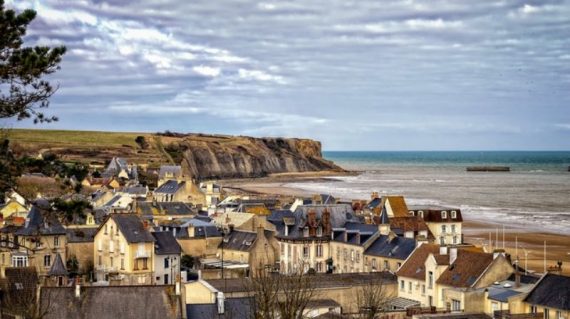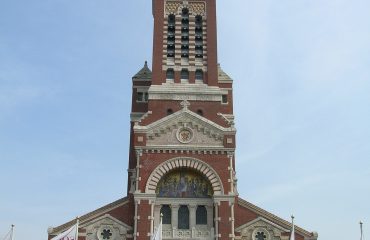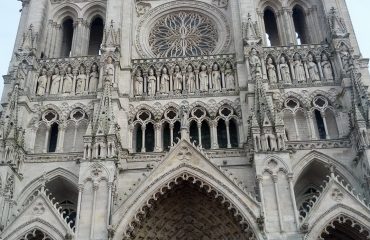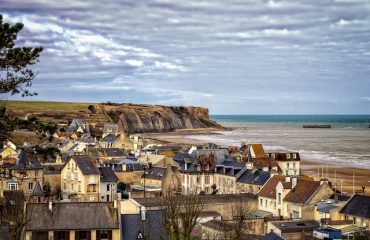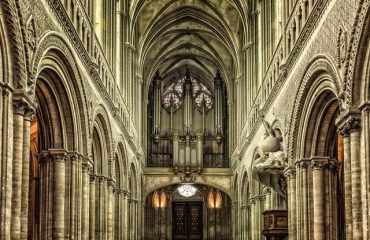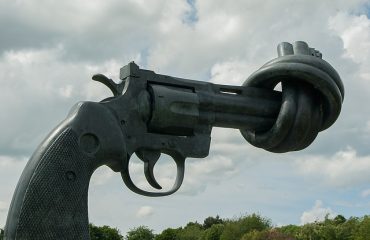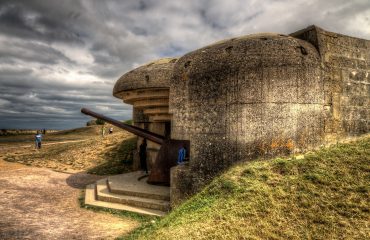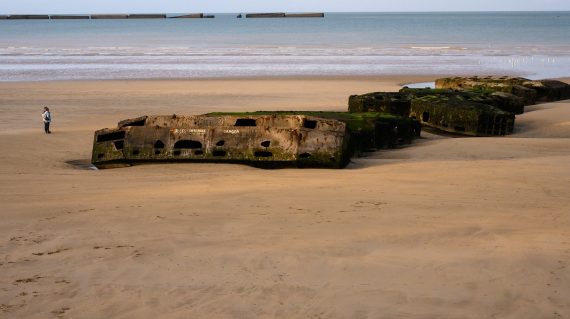
Duration: 4 Days
Discover Normandy
On 6th June 1944, the allies launched their invasion of Normandy which led to the liberation of France and Europe. The British landed at the Sword and Juno beaches while the Americans landed to the west of Arromanches at Omaha Beach and met the greatest resistance. The vast American cemetery at Omaha is a poignant reminder of the many lives that were lost. Students can explore some of the surviving German bunkers that lined the beaches and visit the many excellent museums along the coast. The remains of the famous Mulberry harbours that enabled the Allies to unload men and materials are still visible near Arromanches. Not far inland is the pretty town of Bayeux, the first town liberated in Europe and home of the famous Bayeux Tapestry and the British cemetery.
All our tours are customisable, get in touch to discuss your specific requirements
All about the Discover Normandy.
The Edventure Travel Package
All Edventure Travel trips and tours can be customised to your personal requirements, this sample tour is designed to give you inspiration for your own trip. When you are ready to start planning, get in touch and we can design a bespoke package tour for your group. We will always make clear what is included and excluded in your quotation.
Fully Protected
Your trip will be fully protected through our membership of the ABTOT and ABTA. Furthermore, Edventure Travel has its own ATOL licence ensuring that you have complete protection when taking a flight. Edventure Travel offers travel insurance that can be included in your trip to give you protection in the event of unforeseen circumstances.
Customised for you
All tours are 100% customised to suit your group. We believe that every group should be treated individually, it’s your tour after all. If you want to add something that is not featured on our website just let us know and we will work with you to develop an itinerary to meet your needs.
Out of Hours Contact
In the unlikely event that you encounter problems whilst on tour, there will always be someone at the end of the phone to assist with any situation.
Travel Advice
For the latest travel advice from the Foreign & Commonwealth Office including security and local laws, plus passport and visa information, click here. Foreign Travel Advice www.gov.uk/foreign-travel-advice
You should seek advise on recommended vaccinations and precautions from a health professional – either a GP, a practice nurse, a pharmacist or a travel health clinic – ideally at least eight weeks before departure. Further travel health advice can be found on the following link. Travel Health Pro Website https://travelhealthpro.org.uk/countries
The tour package inclusions and exclusions at a glance
What is included in this tour?Items that are included in the cost of tour price.
- Return Ferry/Eurotunnel Crossing
- Executive Coach throughout
- All travel when at your destination
- Accommodation based on bed and breakfast with students in multi-bedded rooms
- Teachers free of charge sharing twin rooms
- All meals mentioned in the itinerary
- All activities mentioned in the itinerary unless otherwise stated
- Travel Insurance
What is not included in this tour?Items that are not included in the cost of tour price.
- Single Room Supplements
- Personal Expenditure
- Overseas departure taxes if applicable
- Tips for guides and drivers
- Full Time Tour Director
- Activities not mentioned
- Meals not mentioned
- Arromanches Normandy
- Bayeux Normandy
- Caen Memorial Museum Caen
- Pegasus Bridge Museum Ranville
- Longues Gun Battery Normandy
- American Cemetery Ranville
- Dunkirk Operation Dynamo Museum Dunkirk
- Atlantic Wall Museum, Osten Ostend
- La Coupole Rocket Site Helfaut
- Albert Albert
- Amiens Amiens
- Theipval Memorial Authuille
- Aqualud Waterpark Le Touquet
All our accommodation is provided through tried and tested suppliers that work well with different types of groups, including schools, colleges and social groups. We work with our agents in each country to provide the best accommodation suited to your group. This can depend on the time of year that you travel, your group size and type, the cities that you will travel to, accessibility and price. We will always discuss with you what your preferences are and give examples of the accommodation that we can offer.


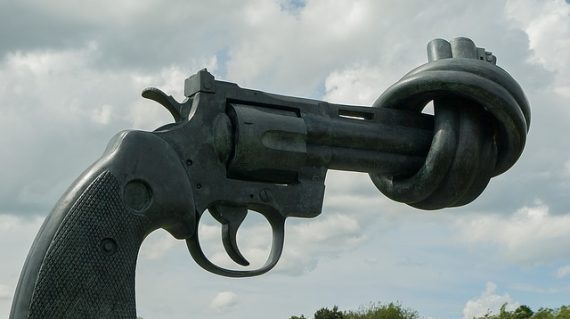
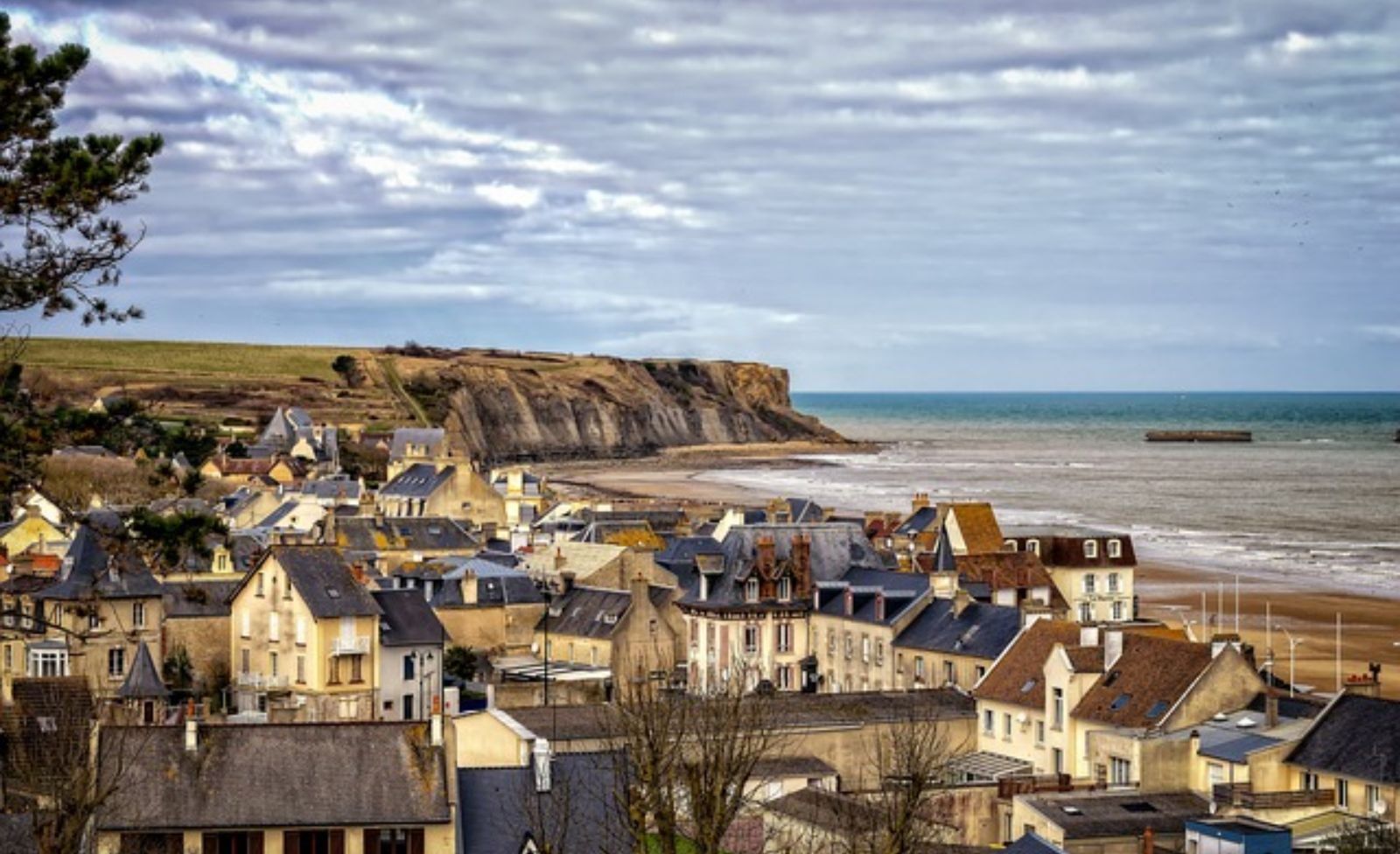 At the D Day Museum in Arromanches, your group will learn about the battle of Normandy. It is your school’s opportunity to discover how some 4,126 allied ships successfully achieved the greatest landings in history on the beaches of Normandy. 3D animated and 3D models as well as photos and films of archives help you to understand this exceptional work of the Battle of Normandy. Facing the Arromanches beach, you will discover the complete operation of the famous Winston artificial harbour from its conception until its exploitation after the landing of the allied troops on June 6, 1944. This artificial port made of 71 boxes, 500 meters of docks and 8 floating roadways is a unique work in the history of mankind. At Arromanches 360, your group can travel back in time and experience the Battle of Normandy as if they were really there. Presenting images collected from sources worldwide, the film takes you back to the events that occurred 70 years ago in just 20 minutes.
At the D Day Museum in Arromanches, your group will learn about the battle of Normandy. It is your school’s opportunity to discover how some 4,126 allied ships successfully achieved the greatest landings in history on the beaches of Normandy. 3D animated and 3D models as well as photos and films of archives help you to understand this exceptional work of the Battle of Normandy. Facing the Arromanches beach, you will discover the complete operation of the famous Winston artificial harbour from its conception until its exploitation after the landing of the allied troops on June 6, 1944. This artificial port made of 71 boxes, 500 meters of docks and 8 floating roadways is a unique work in the history of mankind. At Arromanches 360, your group can travel back in time and experience the Battle of Normandy as if they were really there. Presenting images collected from sources worldwide, the film takes you back to the events that occurred 70 years ago in just 20 minutes.  Bayeux is a popular destination for school groups to visit as it is best known for the Bayeux tapestry, made to commemorate events in the Norman Conquest of England in 1066. The famed 68-metre Tapisserie de Bayeux, is on display in an 18th-century seminary. According to legend, the tapestry was made by the wife of William the Conqueror. Bayeux’s medieval centre contains cobbled streets, half-timbered houses and the towering, Norman-Gothic Cathédrale Notre-Dame. Your school could also visit the Jardin Botanique de Bayeux which is a botanical garden dating from 1864.
Bayeux is a popular destination for school groups to visit as it is best known for the Bayeux tapestry, made to commemorate events in the Norman Conquest of England in 1066. The famed 68-metre Tapisserie de Bayeux, is on display in an 18th-century seminary. According to legend, the tapestry was made by the wife of William the Conqueror. Bayeux’s medieval centre contains cobbled streets, half-timbered houses and the towering, Norman-Gothic Cathédrale Notre-Dame. Your school could also visit the Jardin Botanique de Bayeux which is a botanical garden dating from 1864.  If your group is studying WW2 then visit this museum and war memorial in Caen, Normandy, which commemorates World War II and the Battle for Caen. The museum is generally dedicated to the history of violence and intensive outstanding conflicts during the twentieth century and mainly focuses on the fragility of peace. Its intention is to ”pay a tribute to the martyred city of the liberation” but also to tell ”what was the terrible story of the 20th century in a spirit of reconciliation”.
If your group is studying WW2 then visit this museum and war memorial in Caen, Normandy, which commemorates World War II and the Battle for Caen. The museum is generally dedicated to the history of violence and intensive outstanding conflicts during the twentieth century and mainly focuses on the fragility of peace. Its intention is to ”pay a tribute to the martyred city of the liberation” but also to tell ”what was the terrible story of the 20th century in a spirit of reconciliation”. 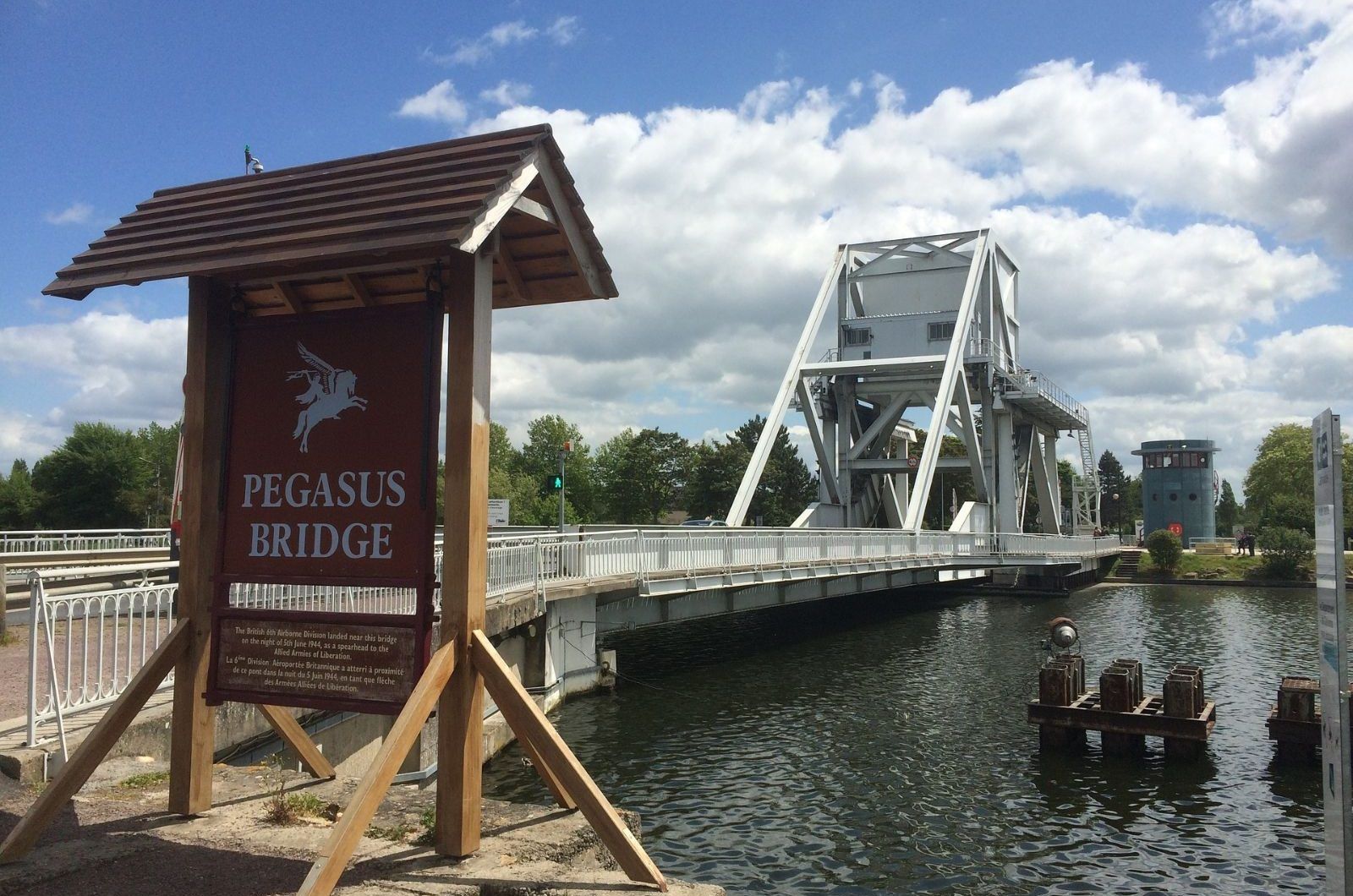 When your group visits this museum, they will realise that it is a memorial to the 6th Airborne Division in the Normandy landings. The large garden contains the Pegasus Bridge, the replica of the Horsa glider and memorials to the men of Operation Deadstick. The Bénouville Bridge had been renamed Pegasus Bridge on 26 June 1944 in honour of being the first objective taken by the airborne troops in the Normandy campaign. In 1993 the Bridge over the Caen Canal was removed and replaced by a new structure. The original Pegasus Bridge was placed on waste ground close to its original position and became the focal-point for the new museum, Memorial Pegasus, which was opened on 4 June 2000 by the Prince of Wales. The museum building exhibits artifacts, exhibitions and personal objects related to the 6th Airborne Division.
When your group visits this museum, they will realise that it is a memorial to the 6th Airborne Division in the Normandy landings. The large garden contains the Pegasus Bridge, the replica of the Horsa glider and memorials to the men of Operation Deadstick. The Bénouville Bridge had been renamed Pegasus Bridge on 26 June 1944 in honour of being the first objective taken by the airborne troops in the Normandy campaign. In 1993 the Bridge over the Caen Canal was removed and replaced by a new structure. The original Pegasus Bridge was placed on waste ground close to its original position and became the focal-point for the new museum, Memorial Pegasus, which was opened on 4 June 2000 by the Prince of Wales. The museum building exhibits artifacts, exhibitions and personal objects related to the 6th Airborne Division.  Students will discover that the Longues Gun Battery is the only one in Normandy to retain all its original guns in situ and was listed an historical monument in October 2001. It remains in a good state of conservation. It was situated between the landing beaches of Omaha and Gold and shelled both beaches on D-Day, the 6 June 1944. The battery is situated on a 60m cliff overlooking the sea and formed a part of Germany’s Atlantic Wall coastal fortifications. On the evening of 5th/6th June 1944 the battery was attacked by bombers but little damage was inflicted on the casemates but it was captured on June 7 and played no further part in the Normandy campaign.
Students will discover that the Longues Gun Battery is the only one in Normandy to retain all its original guns in situ and was listed an historical monument in October 2001. It remains in a good state of conservation. It was situated between the landing beaches of Omaha and Gold and shelled both beaches on D-Day, the 6 June 1944. The battery is situated on a 60m cliff overlooking the sea and formed a part of Germany’s Atlantic Wall coastal fortifications. On the evening of 5th/6th June 1944 the battery was attacked by bombers but little damage was inflicted on the casemates but it was captured on June 7 and played no further part in the Normandy campaign.  Your students cannot fail to be moved by the enormity of the human loss that happened during WW2 by the Americans. The Normandy American Cemetery and Memorial honours many American troops who died in Europe during the conflict. It is located on the site of the former temporary battlefield cemetery of Saint Laurent and covers 172.5 acres and contains 9,388 burials. A memorial in the cemetery includes maps and details of the Normandy landings and military operations that followed. At the memorial’s centre is a bronze statue called ‘Spirit of American Youth Rising from the Waves’. There is also a visitor centre at the cemetery, relating the global significance and meaning of Operation Overlord.
Your students cannot fail to be moved by the enormity of the human loss that happened during WW2 by the Americans. The Normandy American Cemetery and Memorial honours many American troops who died in Europe during the conflict. It is located on the site of the former temporary battlefield cemetery of Saint Laurent and covers 172.5 acres and contains 9,388 burials. A memorial in the cemetery includes maps and details of the Normandy landings and military operations that followed. At the memorial’s centre is a bronze statue called ‘Spirit of American Youth Rising from the Waves’. There is also a visitor centre at the cemetery, relating the global significance and meaning of Operation Overlord. 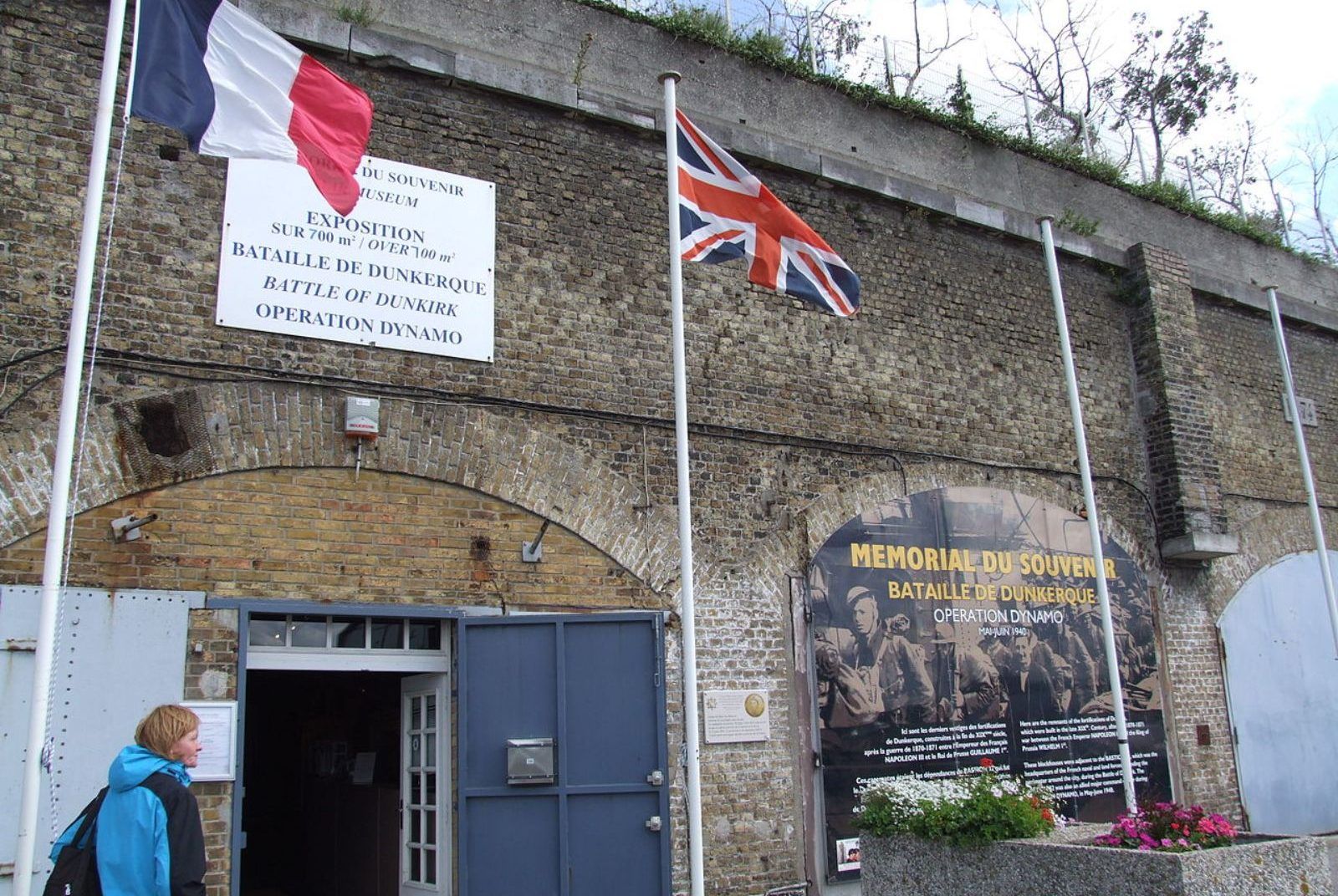 If your students are studying WW2 then The Dunkirk Museum tells them the story of the battle and the evacuation of more than 330,000 Allied soldiers from the Dunkirk beach in 9 days during the planned mass evacuation of May 1940, known as Operation Dynamo. Your group will discover that it was both a disaster and a triumph. With the Germans bombing Dunkirk and the nearby beaches, the flotilla of vessels (including the immensely courageous crews of the 336 Little Ships) managed the excavation of 338,226 allied soldiers. During your groups visit, you can travel the 350 linear meters of a rich exhibition of military and photographic maps and a rich collection of weapons, uniforms and models. A comfortable projection room will allow you to watch an archive film which will take you on an exciting journey to the heart of memory and underwater archaeology.
If your students are studying WW2 then The Dunkirk Museum tells them the story of the battle and the evacuation of more than 330,000 Allied soldiers from the Dunkirk beach in 9 days during the planned mass evacuation of May 1940, known as Operation Dynamo. Your group will discover that it was both a disaster and a triumph. With the Germans bombing Dunkirk and the nearby beaches, the flotilla of vessels (including the immensely courageous crews of the 336 Little Ships) managed the excavation of 338,226 allied soldiers. During your groups visit, you can travel the 350 linear meters of a rich exhibition of military and photographic maps and a rich collection of weapons, uniforms and models. A comfortable projection room will allow you to watch an archive film which will take you on an exciting journey to the heart of memory and underwater archaeology. 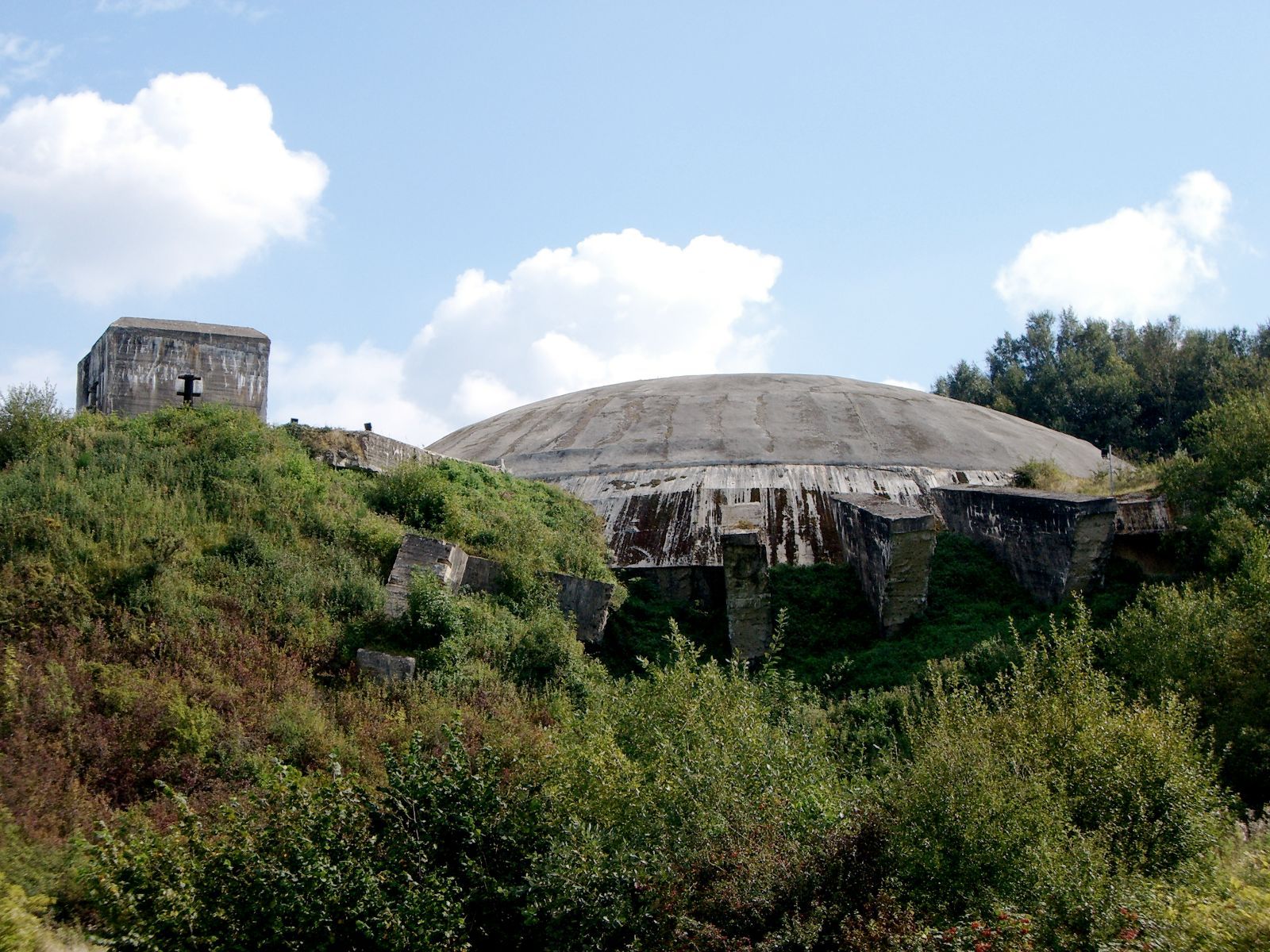 La Coupole is a Second World War bunker complex in northern France which was built by the forces of Nazi Germany between 1943 and 1944 to serve as a launch base for V-2 rockets directed against London and southern England. Constructed in the side of a disused chalk quarry, your students will see the prominent and immense concrete dome. It was built above a network of tunnels housing storage areas, launch facilities and crew quarters and was designed to store a large stockpile of V-2s, warheads and fuel. The intent was intended to launch V-2s on an industrial scale and dozens of missiles a day were to be fuelled, prepared and launched in rapid sequence against London and southern England. The complex remained derelict until 1997, when it opened to the public as a museum. Exhibits in the tunnels and under the dome tell the story of the German occupation of France during World War II, the V-weapons and the history of space exploration.
La Coupole is a Second World War bunker complex in northern France which was built by the forces of Nazi Germany between 1943 and 1944 to serve as a launch base for V-2 rockets directed against London and southern England. Constructed in the side of a disused chalk quarry, your students will see the prominent and immense concrete dome. It was built above a network of tunnels housing storage areas, launch facilities and crew quarters and was designed to store a large stockpile of V-2s, warheads and fuel. The intent was intended to launch V-2s on an industrial scale and dozens of missiles a day were to be fuelled, prepared and launched in rapid sequence against London and southern England. The complex remained derelict until 1997, when it opened to the public as a museum. Exhibits in the tunnels and under the dome tell the story of the German occupation of France during World War II, the V-weapons and the history of space exploration.  Albert is a commune in the Somme, northern France and was completely reconstructed after the war. Your school could visit the Basilica which was faithfully rebuilt according to its original design by the son of the architect who had overseen its construction in 1885–95. The present statue is an exact replica of Roze’s original design, and a war memorial designed by Roze and featuring an image of the Leaning Virgin can be seen in the Abri (Shelter) Museum, which houses souvenirs of the war. The underground shelters in which the museum is located served as protective bunkers for Albert’s residents during aerial bombardments in World War II.
Albert is a commune in the Somme, northern France and was completely reconstructed after the war. Your school could visit the Basilica which was faithfully rebuilt according to its original design by the son of the architect who had overseen its construction in 1885–95. The present statue is an exact replica of Roze’s original design, and a war memorial designed by Roze and featuring an image of the Leaning Virgin can be seen in the Abri (Shelter) Museum, which houses souvenirs of the war. The underground shelters in which the museum is located served as protective bunkers for Albert’s residents during aerial bombardments in World War II. 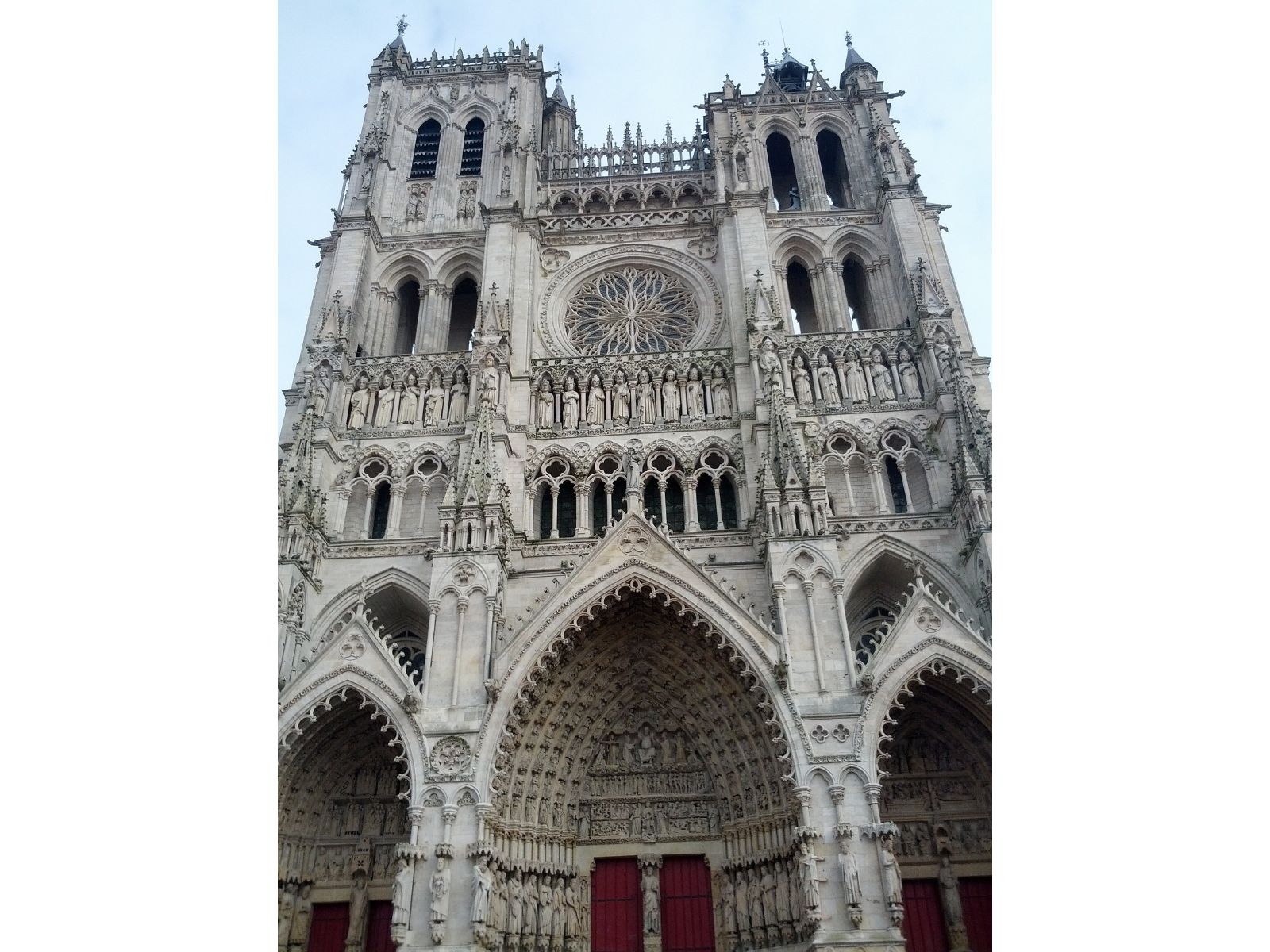 Amiens is a city in northern France, divided by the Somme River, and is best known for the Gothic Amiens Cathedral and nearby medieval belfry. The narrow streets are lined with shops and cafes in the Quartier St.-Leu’s and floating market gardens can be seen all along the city’s canals. Visit the art and antiquities, spanning centuries, in The Musée de Picardie. Nearby, your group could visit the Maison de Jules Verne museum where the science fiction author once lived.
Amiens is a city in northern France, divided by the Somme River, and is best known for the Gothic Amiens Cathedral and nearby medieval belfry. The narrow streets are lined with shops and cafes in the Quartier St.-Leu’s and floating market gardens can be seen all along the city’s canals. Visit the art and antiquities, spanning centuries, in The Musée de Picardie. Nearby, your group could visit the Maison de Jules Verne museum where the science fiction author once lived. 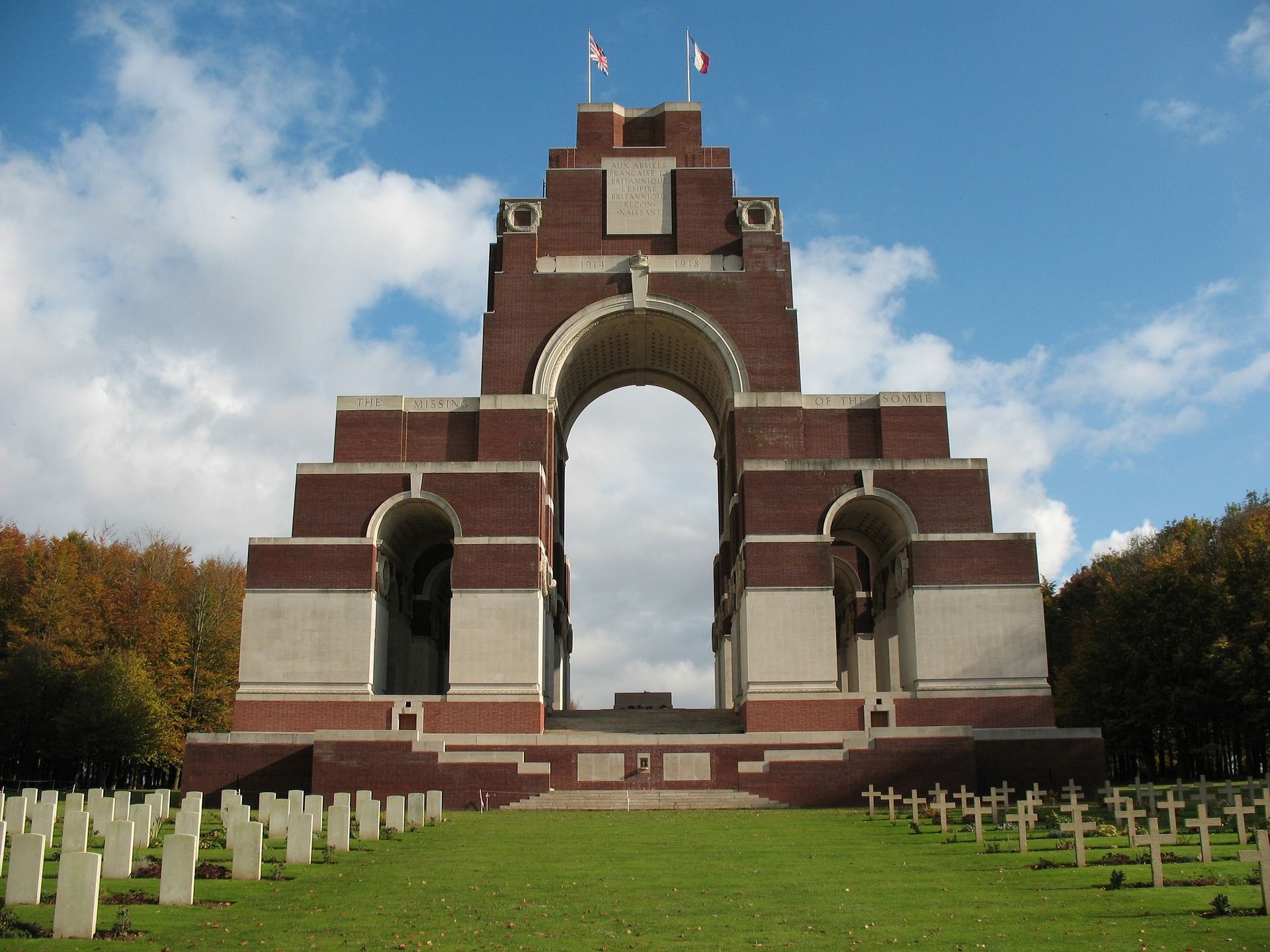 Theipval Memorial is the largest Commonwealth memorial to the missing in the world and is situated on the high ground overlooking the Ancre River in France. It towers over 45 metres in height and dominates the landscape for miles around. Students will discover that this memorial commemorates more than 72,000 British and South African men who died in the Somme, mainly in the 1916 offensive, and have no known grave. Your group will learn that this area saw some of the heaviest fighting of the First World War.
Theipval Memorial is the largest Commonwealth memorial to the missing in the world and is situated on the high ground overlooking the Ancre River in France. It towers over 45 metres in height and dominates the landscape for miles around. Students will discover that this memorial commemorates more than 72,000 British and South African men who died in the Somme, mainly in the 1916 offensive, and have no known grave. Your group will learn that this area saw some of the heaviest fighting of the First World War.  If your group love water then this will be the place for them!!! Aqualud is a huge water park on the seafront in Le Touquet with several indoor and outdoor pools, a wave pool and a giant toboggan run. Housed under a glass dome is a giant pool with waves, ‘rocky’ slides, jacuzzis and a solarium. If you visit in the summer, when the outdoor section is open there will be 3 more pools, flumes and two rides, the Black Hole and the Twister.
If your group love water then this will be the place for them!!! Aqualud is a huge water park on the seafront in Le Touquet with several indoor and outdoor pools, a wave pool and a giant toboggan run. Housed under a glass dome is a giant pool with waves, ‘rocky’ slides, jacuzzis and a solarium. If you visit in the summer, when the outdoor section is open there will be 3 more pools, flumes and two rides, the Black Hole and the Twister. 